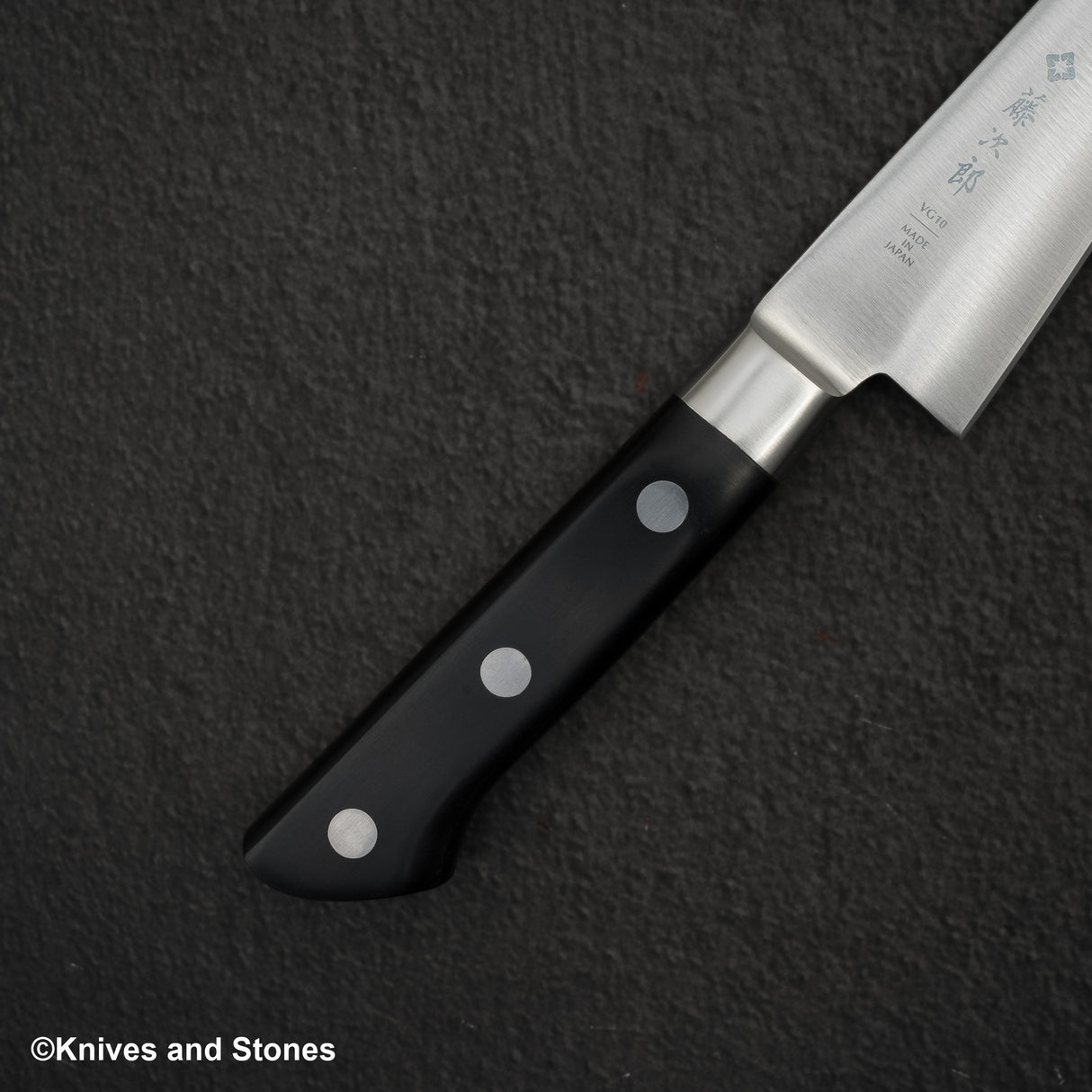Tojiro | SKU:
TJ-DPVG10-F803-HONES150
Tojiro DP VG10 F-803 Honesuki 150mm
$129.95
Unit price
/
Unavailable
Tojiro DP VG10 F-803 Honesuki 150mm is backordered and will ship as soon as it is back in stock.
Couldn't load pickup availability
Detailed Specifications
| Line | Tojiro DP |
| Profile | Honesuki / Boning, Garasuki |
| Bevel Type | Double Bevel |
| Weight | 180 g 6.35 oz |
| Edge Length | 150 mm .5.91 inch |
| Heel Height | 39 mm .1.54 inch |
| Width @ Spine | 2.7 mm 0.11 inch |
| Width @ Mid | 2.7 mm 0.11 inch |
| Width @ 1cm from Tip | 1.3 mm 0.05 inch |
| Steel | VG10 | Stainless |
| Blade Construction | Sanmai - Stainless Clad |
| Hardness (HRC) | 59 - 61 |
| Surface Finish | Migaki |
| Handle | Western Pakka Wood with Bolster |
| Region | Tsubame |
| Best for |
|

| Pros | Cons |
|
|
|
Care Instruction
- Don't cut hard things! Japanese knives are brittle so bone hacking is a NO NO!
- Wash with neutral detergent after use, and wipe dry;
- Please don't wash knife with dishwasher, it will damage the wood handle;
- Be careful not to leave the knife close to a heat source for a long time;
- It is a lot more dangerous to cut with a blunt knife than a sharp knife!
- It is best to sharpen a Japanese knife regularly on a waterstone.






















